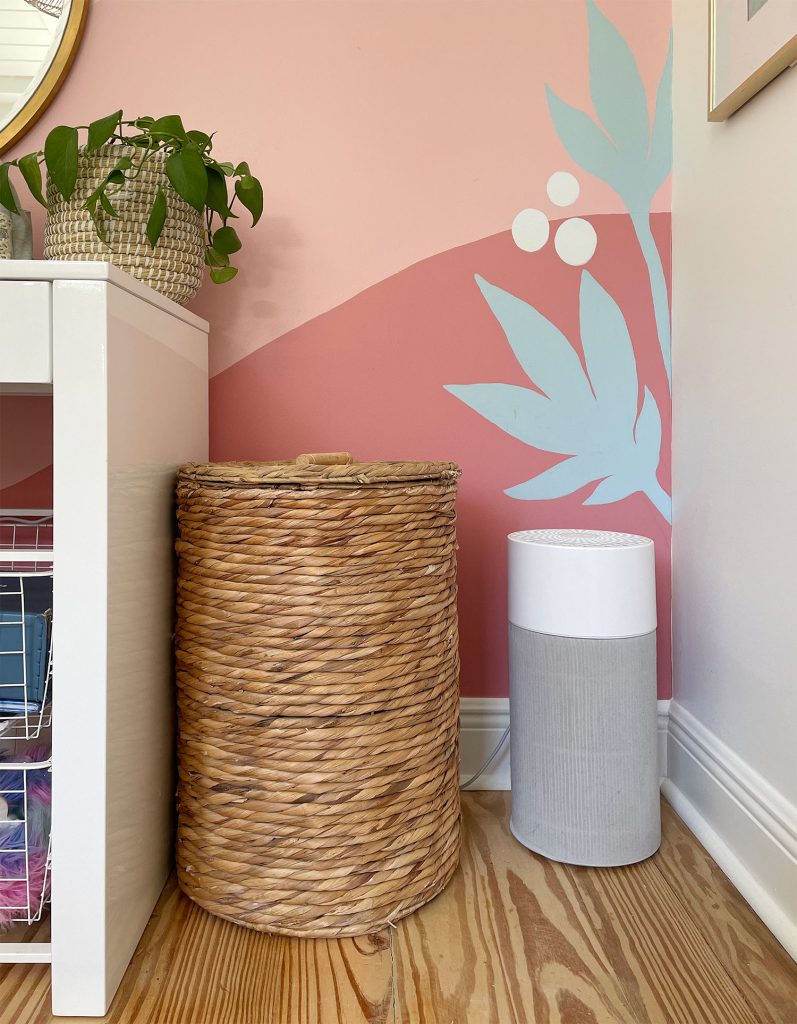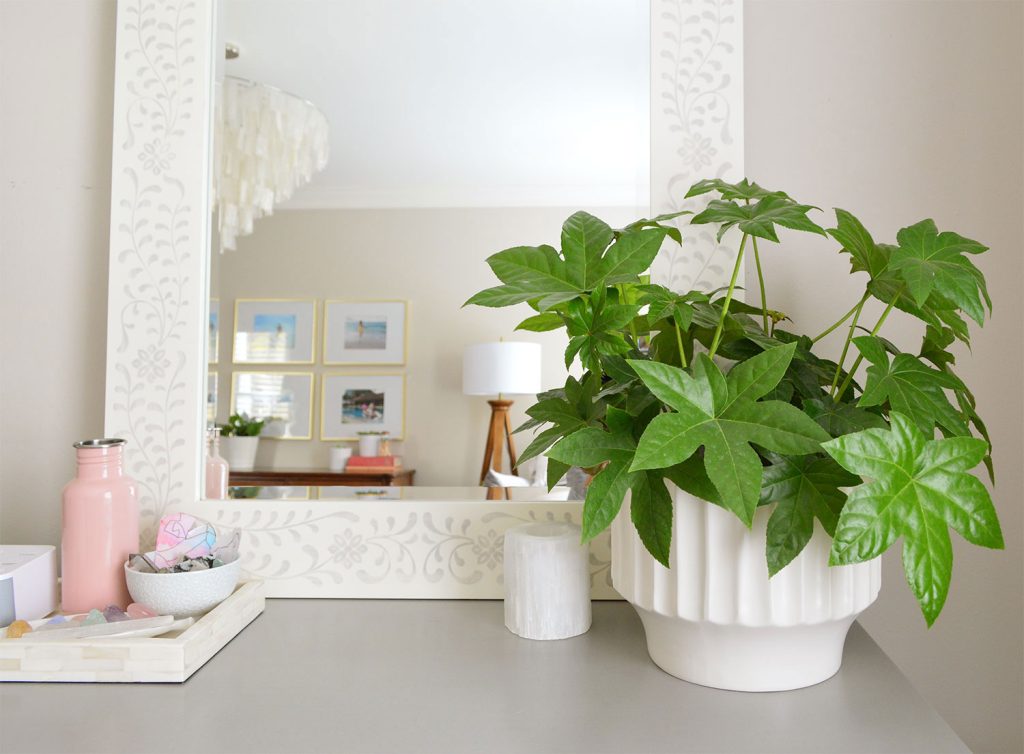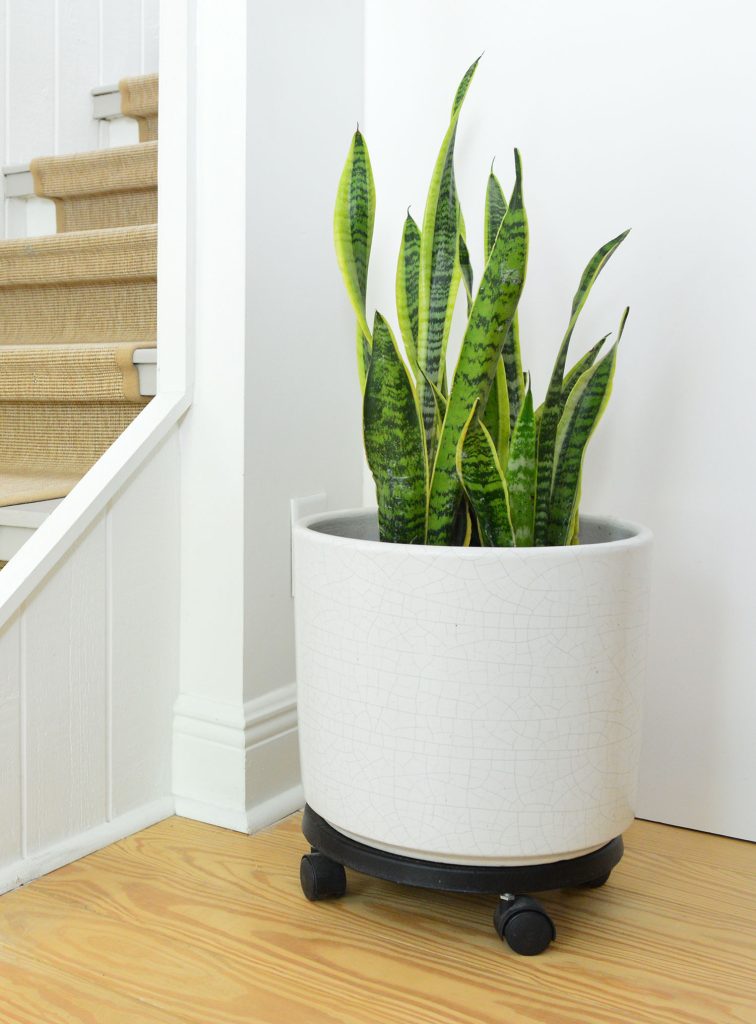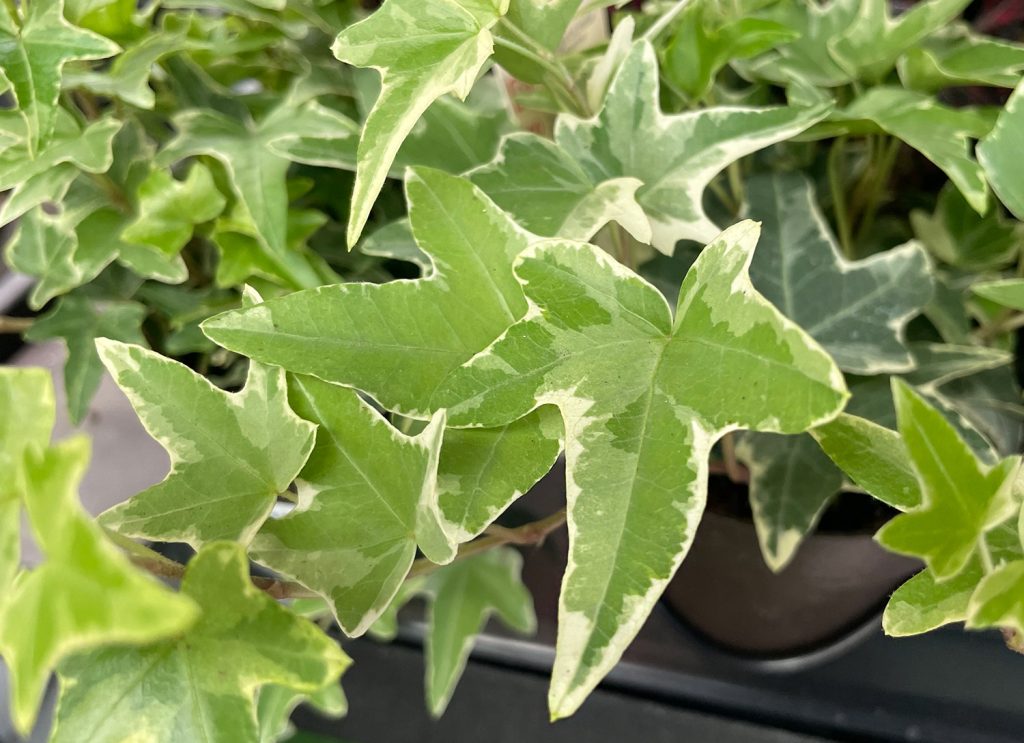We love any excuse to buy more plants, and you’ve probably heard that they can improve the indoor air quality in your home. But before you spend your paycheck in the name of a healthier home, let’s dive into the air-purifying powers of plants. We’ll share with you the plants we recommend and the benefits you can actually expect from them.

We’ve been hearing for years about how plants act as natural air filters for your home. So let’s dig a little deeper, shall we?
7 air purification stations
If you came here for a list, below are our favorite air purifying houseplants. Best of all, these are all beautiful, low-maintenance plants. Many of them also appear on our list of the best low-light indoor plants, too!
Dracaena (including corn plant) Snake plant Aglaonema English ivy Pothos Bamboo plant Spider palm
There are certainly more that could be listed here, but we’ve narrowed it down to those most often cited by experts and the plants we think look the best, too.
Do plants really purify the air?
They do! Plants not only convert carbon dioxide into oxygen, but also remove harmful volatile organic compounds such as benzene and formaldehyde from the air. This was famously proven in a 1989 NASA study. It is often cited as definitive proof that plants are the secret to improving the air quality in your home. Unfortunately, the truth is a bit more complicated.


NASA’s indoor laboratory conditions are not a good indicator of what plants do in real homes. Houses are not closed, sealed boxes. Your indoor air is exchanged regularly thanks to activities such as opening doors and running your heating, ventilation, and air conditioning (HVAC) systems. These plants do a much better job of improving air quality than any other plant. In fact, recent studies have concluded that you would need hundreds or even thousands (!!!) of plants in your home to achieve the air purification levels reported by NASA.
What are the benefits of houseplants?
Fortunately, plants are still useful additions to your home — even if they’re not important air purifiers. In addition to its beautiful aesthetics, it has a variety of mental health benefits!
Plants improve mood
Spending time near houseplants has been scientifically proven to enhance positive emotions and suppress negative emotions in as little as 20 minutes. When compared to rooms without plants, people report everything from increased happiness, increased life satisfaction, and a more positive outlook.


Plants reduce stress
One study showed that caring for plants was able to reduce stress in participants, compared to a computer task. Another study showed that exposing hospital patients to plants – and even their photos! – Reduce their stress. Adding plants to a windowless office not only reduced stress, but increased productivity in some test subjects!
Plants improve productivity and concentration
Some also say that these improvements in mood and decreased stress help us with productivity and focus as well. A small study of elementary school students showed that looking at plants increased their attention and comfort in the classroom. Another study showed that plants help avoid “attention fatigue” during difficult office tasks.
We could go on, but we think this shows that there are more than enough reasons to justify your next plant purchase.
How to purify indoor air
If plants aren’t your ticket to improving indoor air quality, what are? Here are some tips from experts at the Environmental Protection Agency and the American Lung Association.
Reduce incoming pollutants
The best thing we can do to improve air quality is not to introduce pollutants in the first place. Eliminate or reduce activities such as smoking and use of natural gas stoves. Even burning candles or using stoves has been shown to reduce air quality. Pay attention to VOCs and gases released by products such as paints, sprays, and even furniture and clothing. If a new product we buy has a noticeable “new” smell, we leave it out in the sun to let it out.
Open a window
Opening doors or windows for at least 10 minutes a day is a great way to let fresh air in, since outside air is usually cleaner than indoor air. This is a free method recommended by experts, even in the winter.
Buy an air purifier
Home air purifiers do the job you hope plants will do. They are workhorses for removing dust, pollen, VOCs, and more. We have sworn by this air purifier for many years and have several in our home. You can read more about why we love it here.


Keep a clean house
Dust and dander can aggravate allergies, so vacuuming, dusting, and washing bedding regularly are great ways to help purify your indoor air. Also be sure to clean damp areas where mold or mildew may grow.
Change your HVAC filter
It is usually recommended to change the filter on your heating and cooling system every 3 months. Put a reminder on your phone so you don’t forget. We always keep a spare filter on hand so we’re ready! The moment we enter the last piece, we ask for the next piece.
Radon and carbon monoxide testing
Our first two homes had high levels of radon, a cancer-causing gas that emerges from the ground. We had to install mitigation systems in our crawl spaces. So, whenever you move, use an inexpensive home test kit to see if your site has high levels. We also advise you to obtain a carbon monoxide detector to alert you when leaks of this deadly gas occur.


Shrink your plant collection
We know you came here looking for new plants, not to be told to get rid of them. But remember, plants — when not properly maintained — can be counterproductive to your air purification goals. Wet soil and rotting roots can promote rot. Leaves collect dust. Yes, flowers may cause allergies. So make sure your plant collection is not too large to take care of.
Plants for a healthier home
I feel like this post has generated too much buzz, so let’s get back to the fun stuff: plants! Now that we understand that houseplants are good for us (but not in the ways we thought), here are some of our favorite houseplants. They are easy to care for, many tolerate low light, and guess what? You can still tell everyone they’re purifying the air, because…just a little.
Dracaena


Dracaena is the class of plants most often mentioned in the infamous NASA study. Three species were studied, including the popular cornflower (Dracaena fragrans ‘Massangeana’) as well as the dragon tree (Dracaena marginata), and two species of Dracaena deremensis (Janet Craig and Warneckii). We love it because it’s easy, affordable, and has vibrant green leaves.
Snake plant


Snake plants are another very popular plant that tolerates low light and is technically a Dracaena as well. NASA listed it under its ancient genus, Sansevieria, but it is now classified as Dracaena trifasciata. They have the ability to convert carbon dioxide overnight, making them better oxygen producers. But just like their air-purifying effects, you probably won’t notice the difference, but people still like to place snake plants in their bedrooms to increase oxygen throughout the night.
Aglaonema


Aglaonema are some of our favorite low-light tolerant plants (NASA uses the common name Chinese Evergreen in their study). Its large, tropical leaves come in a variety of bright colors, and it is remarkably easy to care for. Again, their air purifying skills may be questionable, but they definitely improve the mood in our house!
English Ivy


As one of the few vines in the NASA study, English ivy (Hedera helix) was one of the best-performing plants in a laboratory setting. It is also very easy to care for and tolerates low light conditions.
Pothos


Another vine in the study — and our favorite houseplant — is golden pothos (Epipremnum aureum). We have Pothos varieties in almost every room in our house because they’re hard to kill (they’re often called Devil’s Ivy) and they look great when placed on a shelf or climbing atop a bookcase. Above you can see a golden pothos plant next to one of our neon pothos plants.
Bamboo palm
Bamboo palms (Chamaedorea seifritzii) are gorgeous indoor-friendly palms that can reach up to 8 feet tall indoors. They are slightly larger than another low-light variety called parlor palms. We have so many outdoor palm trees in our part of Florida that we don’t have any indoors, but they are a great way to add a tropical vibe to any room.
Spider factory


Spider plants (Chlorophytum comosum) are small herbaceous houseplants that are very popular because of their variegated, lush foliage. They are very easy to care for and are a great alternative to pothos if you want something for a shelf or table top that won’t fall off.
More plant guides


If you’re looking for more information on some of our favorite plants, check out some of these posts below:
*This post contains affiliate links, so we may earn a small commission when you make a purchase through the links on our site at no additional cost to you.

